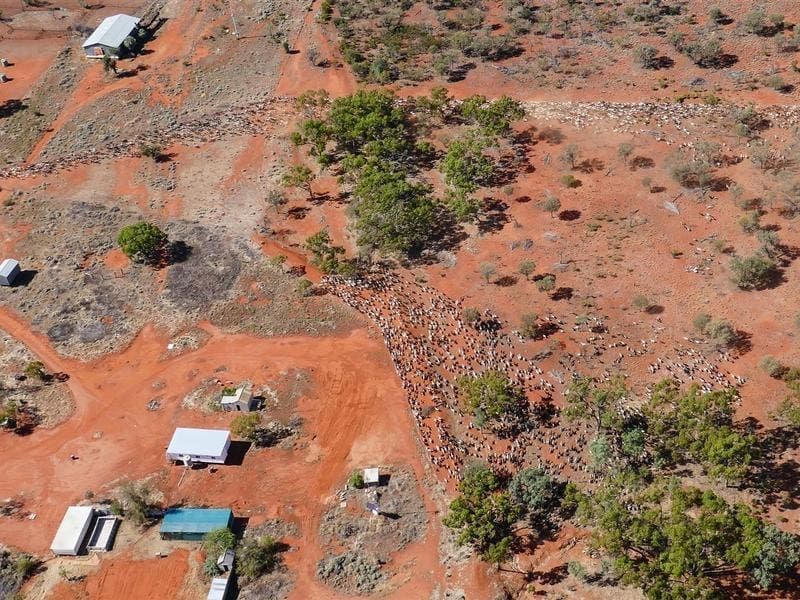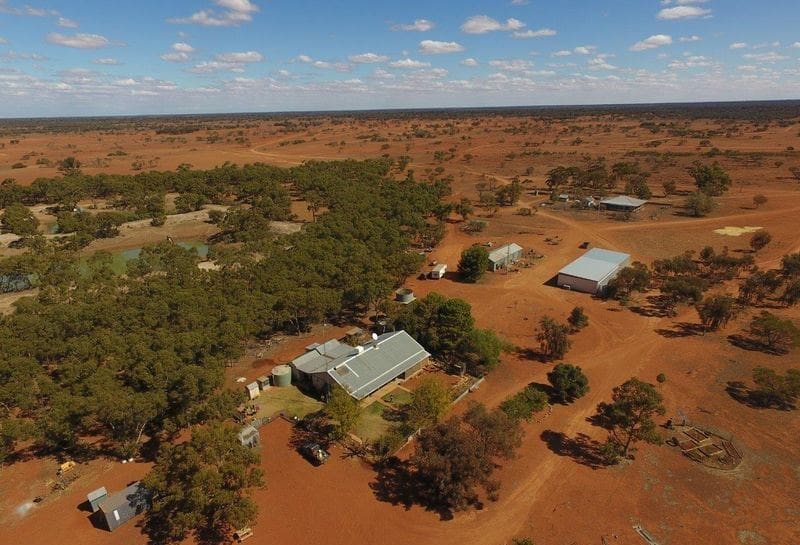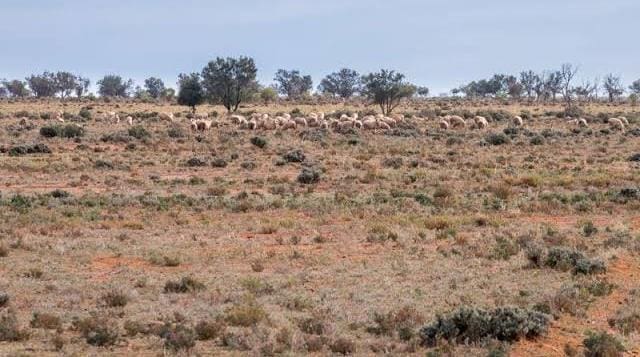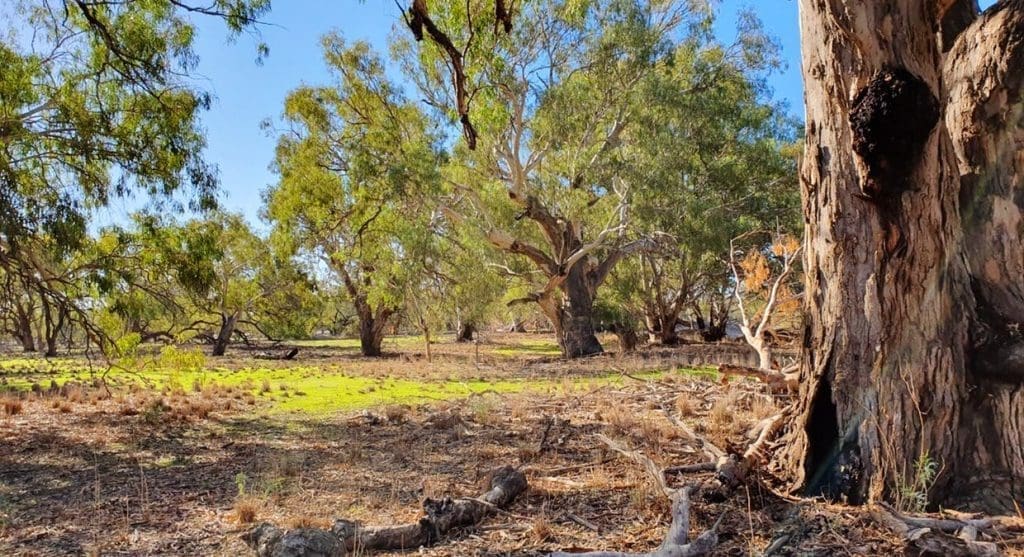
The 24,684ha well-improved western grazing opportunity Myrnong, 60km south west of Wanaaring, is for sale with a $2 million ($81/ha) price tag.
DESPITE being critically dry, there’s still strong demand for breeding country in the semi-arid Western Division of New South Wales, and values are holding up.
The Western Division covers some 32 million hectares, or 42 percent of the land area of New South Wales, with the vast majority leasehold. The climate is characterised by high summer temperatures, low and erratic rainfall and evaporation rates that greatly exceed rainfall.
The vastness of the western division is such that the impact of droughts is not typically uniformly felt across the region, making the current drought an exception.
In this week’s property review, local property stakeholders explain why demand and prices remain as strong as they are.
Ben Finch, Elders Broken Hill
Ben Finch from Elders Broken Hill said after an earlier run of good seasons, many producers who were not previously motivated to sell have changed their minds.
“The current sales are either planned or motivated by the situation. For some, the physical, emotional and mental fatigue from drought has taken its toll, while others are simply at an age where they are looking to retire,” Mr Finch said.
“There haven’t been any financially motivated sales, and I am confident there will be a flush of property sales with a return to a good season.”
Interest has not slowed
Mr Finch said interest had not been curtailed by the dreadful weather conditions.
“Going forward into a third dry summer, property prices are likely to drop 10 percent. However, up until 12 months ago, every single property doubled in price over a four-year period. Places that were valued at $37/ha to $75/ha are now trading for $75 – $175/ha.”
Mr Finch said there had been a healthy level of interest from neighbours wanting to expand.

• The 27,581ha breeding and fattening property Rosewood (117km south of Wilcannia) which sold late last year to a near neighbour for $4.525m ($164/ha)
Two recent properties that Mr Finch took to auction included:
- The 27,581ha breeding and fattening property Rosewood (117km south of Wilcannia) which sold late last year to a near neighbour for $4.525m ($164/ha)
- The 28,240ha renowned Western Division grazing operation Eaglehawk (80km south of Broken Hill) which sold in 2017 for $3.45m ($122/ha) and was divided between two neighbours.

The 28,240ha grazing operation Eaglehawk, 80km south of Broken Hill, sold in late 2017 for $3.45m ($122/ha) and was divided between two neighbours.
He said the interest in both properties was ‘huge.’
“Both had more than inspections and seven or eight registered bidders at auction. Even if that interest halved due to the current dry conditions, 15 interested parties and three to four registered bidders on auction day is more than enough to sell a property.”
Mr Finch said until 12 months ago, producers who had been making large profits from strong commodity prices were reinvesting money back into their holdings.
“These improvements were attracting corporate-style investors, such as leading Australian agribusiness company Webster and Australian health and wellness brand Swisse. There was also competition from producers in South Australia’s mid north seeking to expand their operations.”
Entry level
Mr Finch said while most properties in the region ranged from $3.5m to $6m, there was entry-level interest for the $1m to $1.5m blocks.
“Start-ups are seeking the right sized property –smaller 8000 to 12,000 hectare blocks. Recently, an entry level buyer competed with a neighbour at auction to push up the price by $200,000.”
That property was the 7700ha Riverside Station, 30km from Wilcannia. It sold to the neighbouring McClure family from The Strip for a district record $1.3m ($168/ha).
Mr Finch said properties in the Western Division would be likely to continue selling because of competing interests.
“There is a healthy interest from corporates, locals, start-ups and producers from South Australia’s mid north. These four categories value the country in four different ways, so if one drops out, the others will continue to compete.”

The 7700ha Riverside Station, 30km from Wilcannia, sold to the neighbouring McClure family from The Strip for a district record $1.3m ($168/ha).
Outlook and opportunity
While the immediate seasonal outlook is bleak for the Western Division, Mr Finch said a return to a normal run of seasons would present a huge opportunity for buyers.
“Mother Nature sometimes goes on leave, but this time she’s gone on long service leave”
“It has been three years since our last significant widespread rainfall event. Mother Nature sometimes goes on leave, but this time she’s gone on long service leave. It is part of living in a semi-arid pastoral zone. Despite the pain, property prices are holding relatively strongly.”
Simon McIntyre, Landmark Adelaide
Simon McIntyre from Landmark Adelaide said while inquiry had been strong, the desperately dry conditions were impacting the commitment to purchase.
“There has been a broad level of interest, particularly from Victoria and eastern New South Wales. However, there has been little activity from Queensland over the last 12 to 18 months, which is symptomatic of also being affected by the drought.”
Mr McIntyre said smaller parcels of land (16,000 to 20,000ha) and smaller volumes of capital were attracting the most interest.
“Average Western Division properties (upwards of 40,000ha) are sought by producers who are diversifying, seeking scale for their breeding operations or who have confidence in the medium-term outlook for commodity prices. There will be, and continue to be, an opportunity and a market for those properties, it is just that producers stop making decisions during drought.”
Prices
Mr McIntyre said Western Division prices were determined by the last sales that had taken place.
“Up until 18 months ago, improved commodity prices saw a reinjection of capital back into much of the station country – that hadn’t occurred for some time. That also contributed to increased property values.”
“When the 56,518ha Comarto (70km south of Broken Hill) and 73,299ha Netley Station (60km from Wilcannia) sold in 2018, prices ranged between $125 and $150/ha. The sustainability of those levels is season-dependent and unfortunately, those prices are now difficult to achieve.”
Mr McIntyre said properties were simply more difficult to sell because there was no opportunity for the buyer.
“It is not the opportunity to buy, it is the opportunity to feed. Producers will hold back selling or purchasing when there is no feed and the property can’t be operated due to seasonal conditions. Large-scale operations are dependent on income and livestock numbers.”
David Russell, Landmark Russell Cobar
David Russell is a well-known name in the Cobar area and Western Division since 1984, trading as Landmark Russell.
He said there was still good inquiry, but listings were limited.
“I wouldn’t have a client in the Western Division who is financially motivated to sell, because most of the region is reasonably destocked. I currently have two large Western Division aggregations that will be offered to the market in the coming weeks that should attract strong interest,” he said.
Rise in prices
Mr Russell said prices around Cobar have risen by 40 to 60pc since 2015-16.
“Many improved properties that have been offered over the past four years have sold very well. Quality properties always sell. Competition between neighbours has also pushed prices up,” he said.
Greg Seiler, Landmark Harcourts Bourke
The country around Bourke is some of the cheapest breeding country available in New South Wales.
Greg Seiler from Landmark Harcourts Bourke believes there is an upside in the short to medium term.
“This drought isn’t going to last forever and when conditions improve, there will be opportunities for production because Bourke is good value breeding country,” he said.
Despite the dry conditions, there appeared to be plenty of interest, particularly from locals.
At the end of August, Mr Seiler auctioned the 18,522ha Myroolia and the 9497ha Part Romani, 125km north west of Bourke.
After more than 30 inquiries, 13 inspections and seven registered bidders, the two properties achieved more than $124/ha or $400/DSE.
Mr Seiler explained the result was one of the highest levels paid for that particular type of country.
A neighbour (based in Glen Innes) secured Myroolia for $2.3m, while a Mudgee producer looking to expand operations into the west paid $1.2m for Part Romani.
Lift in values
Mr Seiler said values had lifted by 35 to 60 percent over the last three to four years in the area.
“It is best expressed in dry sheep equivalent terms. Unimproved western (red soils) grazing country sells for around $350, while improved country sells for $450/DSE. Eastern country featuring better soils and higher rainfall can command $500 to $600/DSE. On a dollar per hectare basis, prices range from $62-$75/ha to upwards of $370/ha.”
Mr Seiler has a number of listings that will come to the market once there is an improvement in the season. In the meantime, the 24,684ha well-improved western grazing opportunity Myrnong, (pictured at top of page) 60km south west of Wanaaring, is for sale with a $2m ($81/ha) price tag.



HAVE YOUR SAY